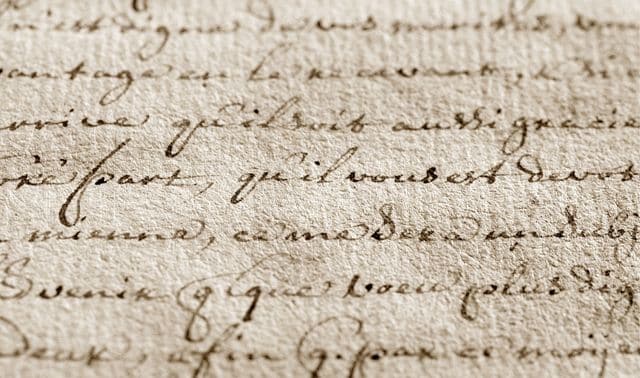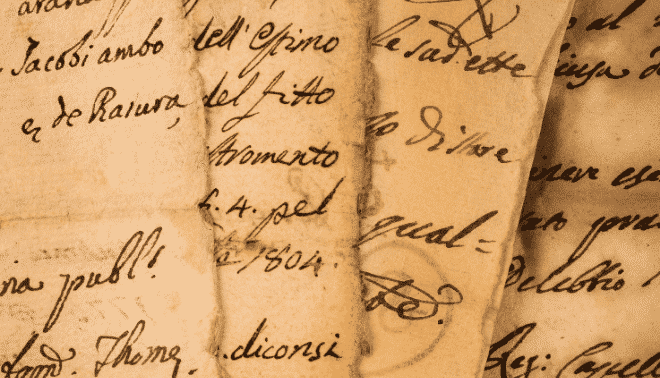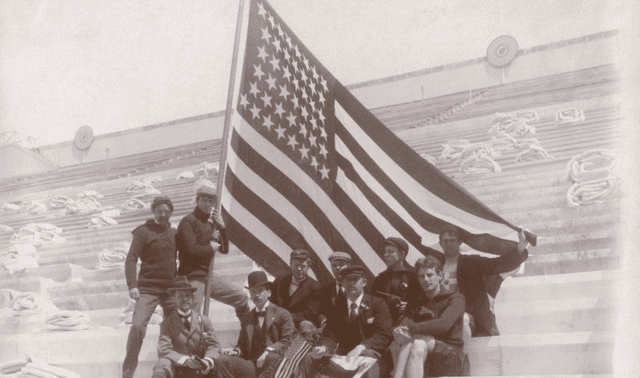John Hancock is known for his iconic signature on the Declaration of Independence. His signature is distinct thanks to its neat lines and its frilly swoops of ink. But you might want to spare a huzzah for the man behind those loft letters: Platt Rogers Spencer, the father of cursive penmanship instruction. A bookkeeper and abolitionist, Spencer established a chain of business schools in the mid-1800s with the slogan “Education for Real Life.” Foremost in that education was the loopingly baroque Spencerian handwriting system (seen today in the original Coca-Cola logo), which he advised students to practice for 6 to 12 hours a day.
You probably instead grew up being “Palmerized,” learning the “plain and rapid style” of cursive Austin Norman Palmer introduced in the early 1900s as a simplification of Spencerian. By 1912, Palmer had sold a million copies of his penmanship textbooks. Charles Zaner and Elmer Bloser also cashed in on Americans’ zeal for proper penmanship, and their Zaner-Bloser manuals were a force in elementary education until Donald Neal Thurber’s rival D’Nealian method came along in the 1970s.
By then, however, the handwriting was already on the wall for cursive. Word processors and then personal computers began to replace penmanship drills in school. In 2013, headlines such as “Is Cursive History?” greeted news that the Common Core Standards for US schools would no longer mandate cursive instruction.
The History of Handwriting
Handwriting is of course a topic of more than passing interest to genealogists, as it’s how most of our ancestors’ history was recorded—sometimes to the point of being indecipherable. No doubt ancient Sumerian genealogists similarly complained about cryptic cuneiform and smudged wax tablets after that civilization began writing things down about 3,000 BC. Sumerian scribes used long, vertical tablets of moist clay, and initially wrote from top to bottom, right to left. Right-handed writers tended to drag their arms through the ideographs they’d just painstakingly inscribed, so they flipped the tablets and switched to left to right, which stuck for most cultures.
About 2,400 BC, Egyptians introduced papyrus and reed brushes for writing, although early hieroglyphics were so time-consuming that they were mostly reserved for more permanent inscription on stone. A simplified hieratic (priestly) script sped up religious writing about 1,500 BC. About a thousand years later a demotic (“people’s”) script emerged, used on the Rosetta Stone.
The Phoenicians developed the first true alphabet, with 22 phonetically based letters, about 1,500 BC. By 800 BC, it reached Greece, whose residents added vowels and dropped some consonants. From there, Alexander the Great spread the alphabet throughout his empire. The Roman Empire got the idea of the alphabet, like its gods, from Greece, and took it across Europe. Until 400 AD, Romans wrote in all uppercase letters, a style called capitalis quadrata (square capitals). It was later condensed into the curvier capitalis rustica to save parchment.
Charlemagne’s empire left its mark on handwriting in the late 700s. Seeking to standardize recordkeeping in his realm, Charlemagne commissioned an English monk, Alcuin of York, to develop what became known as Carolingian minuscule. Designed to maximize legibility, it featured upper- and lowercase letters, punctuation and spaces between words. Manuscripts crafted in monasteries used this script until denser Gothic (or black-letter) writing supplanted it. Dominant in Germany, Gothic letters naturally formed the basis of Gutenberg’s movable type.
Humanists of the Italian Renaissance rebelled against the harsh forms of Gothic script, reverting to a version of Carolingian writing. Some credit Niccolo Niccoli, a 15th-century Italian, with giving this script its distinctively modern slant. Dubbed “italic,” after Italy, this simple style of writing was the precursor to cursive, although not all the letters were linked.
Until this time, penmanship was a specialized skill. The printing technique of copperplate engraving, ironically, helped spread penmanship by enabling the production of copybooks that could reproduce the proper flourishes. In England, penmanship manuals by John Ayer, John Seddon and Edward Cocker began to teach ordinary people (at least those who were literate) how to put words on paper.
Even in Revolutionary War America, professional “engrossers” were employed to handwrite important documents, such as the Declaration of Independence (penned by Timothy Matlack) and the Constitution (by Jacob Shallus). With industrialization and the rise of office work, however, schools and popular books began to democratize penmanship.
Spencer began spreading the gospel of cursive in 1848 with Spencer and Rice’s System of Business and Ladies’ Penmanship. His most popular manual, The Spencerian Key to Practical Penmanship, was actually published by his sons in 1866, two years after Spencer’s death in Geneva, Ohio. American schools promoted the Spencerian method until the mid-1920s, and a Spencerian revival is now underway in charter schools and home schooling.
Spencer begat, you might say, George A. Gaskell, a student of his who published two popular books on penmanship in the 1880s. Palmer was in turn an acolyte of Gaskell, publishing his own Palmer’s Guide to Business Writing in 1894. Palmer’s approach, which one historian described as “a muscular, rugged script better suited to a commercial culture,” continued to be popular into the Baby Boom years. His A.N. Palmer Co. folded in the early 1980s, an early sign of cursive’s waning role in education. Palmer competed for schoolhouse dominance with the similar but entrepreneurially different Zaner-Bloser Script. Charles Paxton Zaner founded the Zanerian College of Penmanship in Columbus, Ohio, in 1888, to prepare students for employment as “penmen.” In 1891, he sold a share of the college to Elmer Ward Bloser, whom he’d met when both were themselves penmanship students and who was now a Spencerian instructor. Broadening the curriculum to include general education, the school soon grew beyond the three students enrolled at the time of Bloser’s arrival. In 1895, it became the Zaner-Bloser Co. and began publishing instructional materials. Its landmark text would be The Zaner Method of Arm Movement, published in 1904, which incorporated findings by child-development psychologists about children’s motor-skills development.
Zaner-Bloser, which merged with the children’s magazine publisher Highlights for Children in 1972, continues in business today and seems poised to survive the passing of cursive into history. It publishes a wide range of K-8 curricula and even has a website—typed, not handwritten.
Timeline of Handwriting
3,000 BC | Sumerians develop cuneiform (“wedge-shaped”) writing
2,800 BC | Egyptians first use hieroglyphics
1,500 BC | Phoenicians invent the alphabet
146 BC | Rome conquers Greece and gets its alphabet
400 | First lowercase letters are developed for Roman business transactions
600 | Irish half-unicals in Bibles resemble modern lowercase letters
781 | Alcuin of York standardizes handwriting for Charlemagne
1,500s | First penmanship copybooks appear in Italy
1848 | Platt Rogers Spencer publishes his first cursive textbook
1894 | A.N. Palmer introduces the Palmer Method
Fun Facts About Handwriting
- The handwriting of the Declaration of Independence belongs not to Thomas Jefferson but to Timothy Matlack, a New Jersey-born Quaker who moved to Pennsylvania (or Pensylvania, as he twice spelled it in the Declaration) in 1744.
- Puritans adopted a plain handwriting, known as copperplate (after the engraving technique) or round hand, to set themselves apart from those using the “decadent” script of the 18th century.
- The alphabet contained only 23 letters, adapted from the Greek, until the 10th century, when u was differentiated from v. The letter w, also a spinoff of v, was added in the 12th century. The last letter to join the alphabet was j, which evolved from i in the 15th century.
From the January/February 2014 Family Tree Magazine







